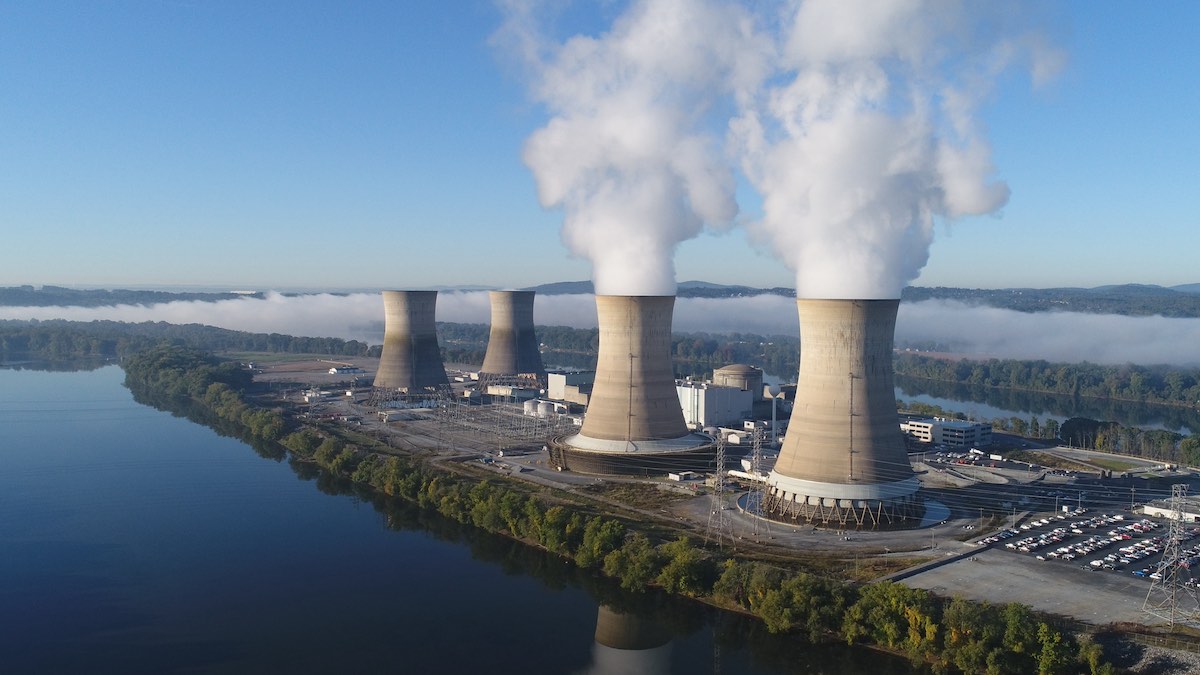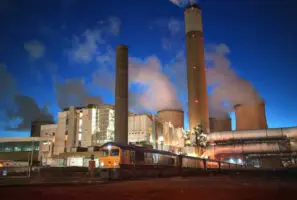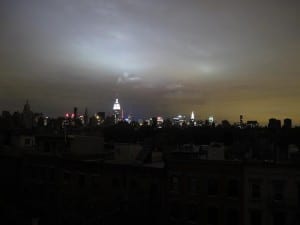The United Firefighters Union of Australia (UFUA) has today launched a last-minute campaign warning Australians of the risks associated with the Dutton Coalition’s plan to build seven nuclear power plants in five states.
The UFUA has revealed that the Coalition’s nuclear costings exclude more than half a billion dollars in essential emergency services infrastructure and personnel. The costs include $446.68 million to establish specialised fire stations both in and near the proposed nuclear sites, and $79.7 million annually in additional firefighter salaries.
The costings assume two specialised fire stations at each of the proposed seven nuclear sites — a mandatory standard of the International Atomic Energy Agency.
UFUA National Secretary Greg McConville said the nuclear plan is both financially reckless and a threat to firefighter and public safety:
“The Coalition’s nuclear plan ignores the reality that nuclear power demands a specialised, fully equipped emergency response capability. This is a half-billion-dollar black hole in their costings puts firefighters and communities at risk, and places the overall cost further out of reach.
“Firefighters already face extreme risks responding to bushfires, floods, and industrial incidents. Nuclear power introduces a new, more dangerous threat we are not prepared for, radioactive contamination that can linger for decades.
“A nuclear accident would stretch our already under-resourced emergency services to breaking point. The consequences for firefighters, first responders, and surrounding communities would be catastrophic.
“Firefighters put their lives on the line every day to protect homes, schools, and hospitals. Asking us to safeguard nuclear reactors, something the Australian public has never asked for, is both reckless and irresponsible.
“This is a high-risk, high-cost gamble with no clear benefit. Our communities deserve clean, safe, and affordable energy solutions, not a nuclear burden that compromises emergency response and public safety.”
The UFUA discusses the cancer risks:
“Responding to nuclear emergencies exposes firefighters to an even greater risk of contracting occupational cancer. The risk of a catastrophic nuclear incident requiring firefighter response would likely result in much shorter periods in which cancer would develop from a single exposure, and the risk of immediate fatalities. This increased risk is documented by The Australian Radiation Protection and Nuclear Safety Agency (ARPANSA).
“ARPANSA describes the public limit of ionizing radiation at 1mSv per year. Section 4.2 of the Radiation Protection Series G-3 Part 2 identifies that in the event of a nuclear accident, emergency workers (naming firefighters specifically) can be exposed to up to 500mSv of ionizing radiation “for life saving actions, to prevent the development of catastrophic conditions and to prevent severe tissue reactions.”
“In Table 1 under the heading “What are the possible health effects?” the ARPANSA website explains that 500mSv can result in “increased risk of cancer [and] acute effects at [the] higher end of [the] range”.
“If a nuclear disaster of the proportions of the Fukushima power plant were to occur at any of the seven sites proposed for nuclear power stations, a radiation plume would endanger local communities.”
Emergency Leaders for Climate Action
Emergency Leaders for Climate Action (ELCA), a coalition of 38 former emergency leaders with more than 1,000 years of experience between them, noted in a submission to the recent federal nuclear inquiry that there are no safety or environmental frameworks in place to manage the risks of nuclear power stations in Australia. Nor are emergency services trained to respond to nuclear disasters.
ELCA notes that the Coalition has released no plans as to how states and territories will be supported to plan for potential emergencies and disasters resulting from the operation of nuclear reactors, as well as the transportation and storage of radioactive waste.
ELCA spokesperson Greg Mullins said:
“Our firefighters are on the frontlines of escalating climate fuelled disasters, like bushfires and floods, fuelled by climate pollution. They’re not trained or equipped to deal with nuclear emergencies that could arise from nuclear reactors or the transportation and storage of radioactive waste.
“I oversaw the deployment of Australian firefighters to assist in the wake of the earthquake and tsunami that led to the Fukushima disaster, where the chaos and devastation caused by nuclear failures was stark. First responders, many of them civilian firefighters, were thrown into situations they weren’t trained for. That’s not a risk we should take in Australia, no matter how remote.”
“There are no safety or environmental frameworks in place to manage the risks of nuclear reactors or to safely transport and store radioactive waste in Australia.
“Placing nuclear reactors in disaster-prone areas like Latrobe, Lithgow, Singleton, and South Burnett would add to the burden emergency services already face responding to worsening bushfires, floods, and storms. …
“Our communities and emergency services are bearing the brunt of worsening disasters driven by burning coal, oil and gas. We don’t have the luxury of waiting decades for new power stations, we must slash climate pollution now to protect Australians. Australia can’t afford to risk our energy security, economy and safety on a nuclear fantasy when renewables can cut pollution today and help ensure a safer future for our kids.”
Nuclear plume
The Nuclear Plume project initiated by Friends of the Earth and others has considered the impacts of a Fukushima-scale nuclear disaster at the Coalition’s proposed nuclear sites. The research finds that 200,000 people live within a 30 km evacuation zone around the seven sites, along with hundreds of schools, hospitals, day care centres and early learning centres.
The federal Labor government notes that 12,000 farms are located within 80 km of the seven sites targeted by the Coalition for nuclear reactors. A July 2024 Joint Ministerial Statement released by Agriculture Ministers of the Governments of Australia, Queensland, NSW, the ACT, Victoria, SA, WA and the NT notes that in similar countries, including the United States, states have produced detailed plans to manage radioactive emergencies from nuclear reactors within a similar radius of farmland (known as the “ingestion zone”). These states have set out detailed guidelines to be followed by farmers, processors and distributors within nuclear ingestion zones to attempt to protect their food supply.
Security risks
The Australian Security Leaders Climate Group warns that in addition to the risk of catastrophic accidents, the Coalition’s plan to build nuclear reactors would leave Australia vulnerable to missile warfare and sabotage.
Retired Admiral Chris Barrie, former Chief of the Australian Defence Force, said:
“Every nuclear power facility is a potential dirty bomb because rupture of containment facilities can cause devastating damage. Modern warfare is increasingly focused on missiles and uncrewed aerial systems, and with the proposed power stations all located within a 100 kilometres of the coast, they are a clear and accessible target. … Do we prioritise the protection of cities and population centres and military bases, or do we divert vital resources to defending seven nuclear power stations scattered across Australia?”
Cheryl Durrant, former Department of Defence Director of Preparedness and Mobilisation, said:
“In the Ukraine-Russia war, both sides have given strategic priority to targeting their opponents’ energy systems, and Australia would be no different. So these nuclear facilities would necessitate expensive and complex missile defence systems as well as allocated cyber and counter-intelligence resources, making our security challenge more complex and expensive.”
Dr. Jim Green is the national nuclear campaigner with Friends of the Earth Australia and a member of the EnergyScience Coalition.







Leave a Reply